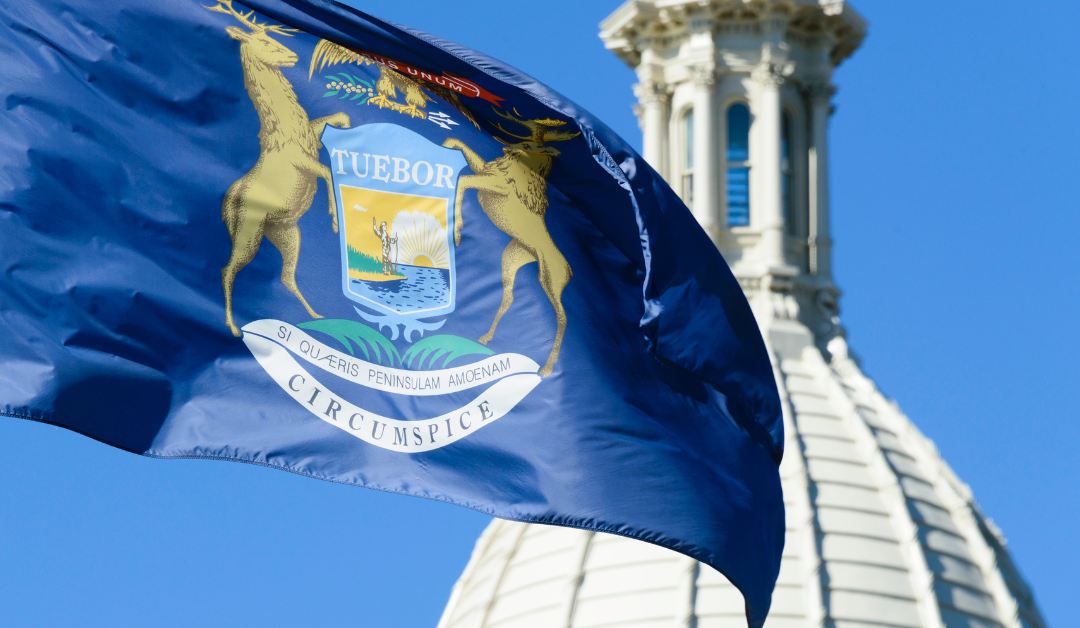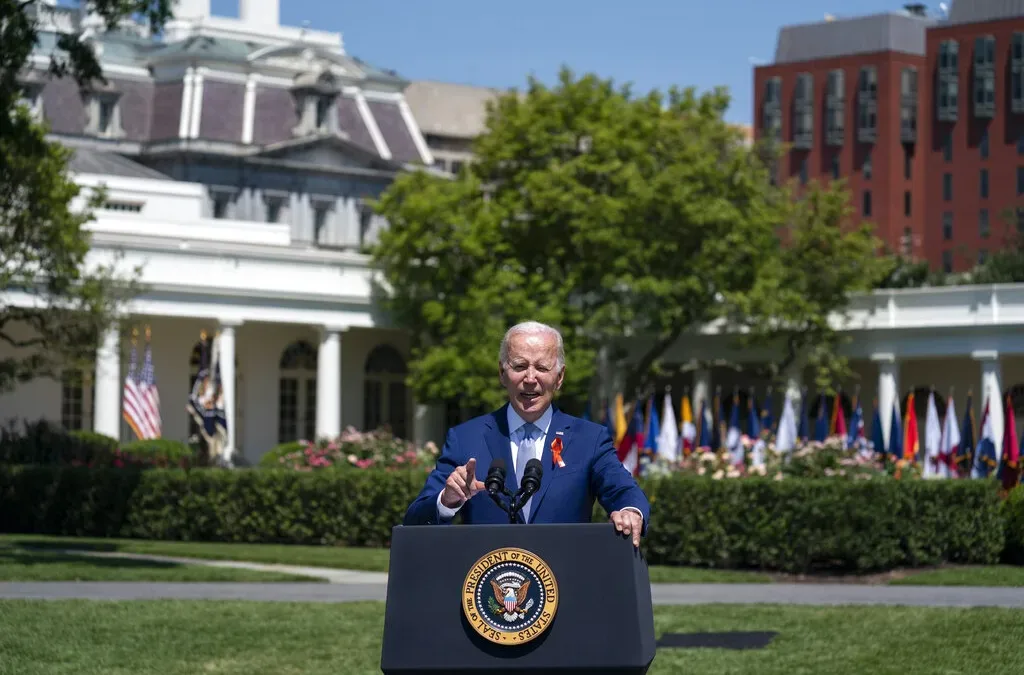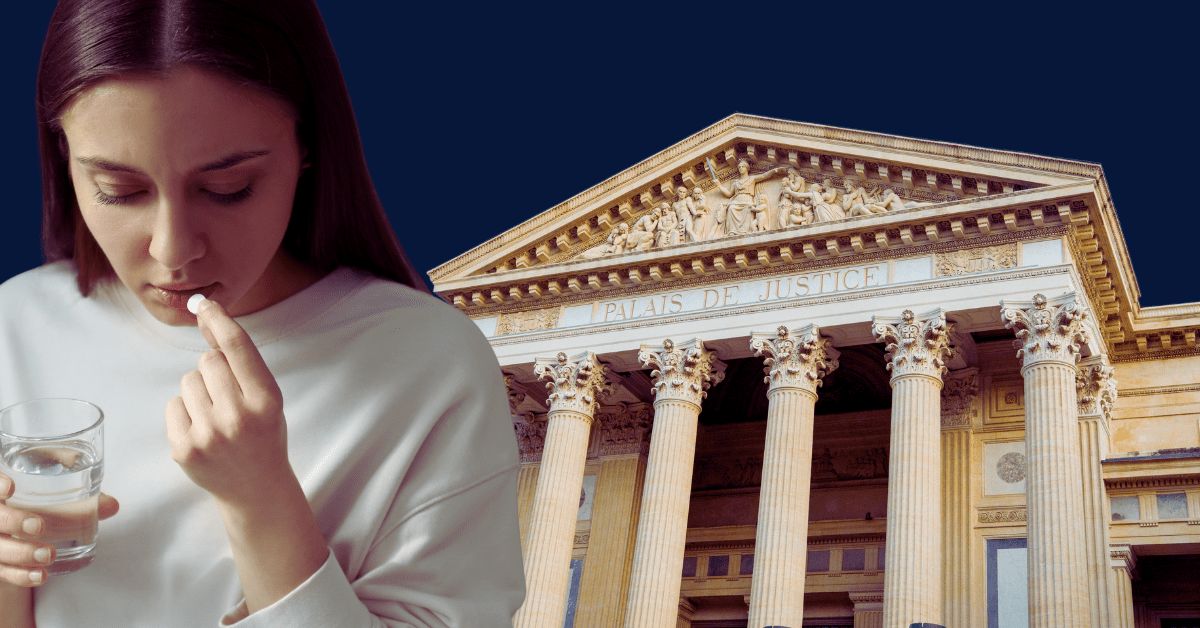
Gas tax holidays, the Inflation Reduction Act, and student loan forgiveness all have an impact on how our economy is doing. And there are plenty of claims on whether these policies will lead to higher rates of inflation, or whether they’ll help tamp them down.
In this post, we’ll stress-test 11 common claims about inflation in Michigan.
But first, we should go over what inflation even is: That being the rate at which prices broadly rise for goods across the market, usually judged along a yearlong trend. If a bag of chips was $1 in June 2000 and $1.05 in June 2001, then inflation in June 2001 would stand at 5% over the last year.
We can think of inflation as a dirty word, but many healthy economies inflate. Economists on the Federal Reserve Board have suggested that 2% is an acceptable rate of inflation, and moderate inflation can be good for the economy. It means people have the means to buy now and do, stimulating business.
Inflation is the reason a pop at the grocery doesn’t cost a nickel anymore. And that’s ok, because people aren’t making $5 a day either.
But the inflation rate as of July 2022 is 8.5%, which is unhealthy, because many people can’t keep up with the price of what they need. Demand is significantly outpacing supply.
It’s worth noting: Deflation, which is when a dollar goes further and earns you more, rarely happens. So in the US, these prices could be the new status quo.
Now, onto playing true and false with some common claims about inflation in Michigan.
CLAIM: Gov. Gretchen Whitmer vetoed a bill that would have suspended the state’s gas tax.
That’s true. But ditching the tax might have hurt Michiganders even more.
In March, Michigan’s Republican-led Legislature voted to approve House Bill 5570, which would have paused Michigan’s 27.2 cents per gallon motor fuel tax for six months. According to an estimate, in those six months, the average motorist would save about $75 total. The state would have taken a revenue hit of around $750 million that, Republicans argued, could be paid out of general surplus funds.
So why did Whitmer veto it?
The tax break wouldn’t have started until 2023. Democrats in the Legislature are the reason for that, though, because they didn’t provide the votes to let the bill take place with immediate effect. Regardless, once it reached Whitmer’s desk, any relief from the package would have come far too late to help voters this summer.
The bill also would’ve hindered road work projects, Whitmer said, since proceeds from the fuel tax are earmarked for road and bridge construction. Some of those projects are already underway.
It’s worth noting: Whitmer has pushed for a separate gas tax relief bill. Hers would suspend the state’s 6% sales tax on gasoline—saving about 24 cents per gallon on a $4 gallon of gas. This time, it was Republicans in the Legislature who stood in the way of those potential savings, refusing to waver from their plan after it was vetoed.
CLAIM: Thanks to President Joe Biden’s tax-and-spending spree, we’ve now seen six straight months of raging inflation rates.
This is false. If we want to talk about debt and discretionary spending, let’s look back to the administration of former President Donald Trump.
Trump far surpassed his debt limit (two times!) with massive government spending (partially to cope with a pandemic). In fairness, former President Barack Obama exceeded this limit too. So did former President George W. Bush. Former President Bill Clinton, believe it or not, wasn’t that bad.
Biden has spent too, of course. But his “spree” is not following the same pace as Trump’s—not close—even when adjusted for the time both have spent in office.
The point is that government spending does not unequivocally equal inflation. (See, for example, inflation during World War 2). It’s a lot more complicated than that.
As EPI’s Josh Bivens explains, the inflation we’re experiencing now is from three things:
- global supply-chain disruptions caused by the pandemic
- huge mismatches in what people wanted to buy and what suppliers were able to provide
- corporations leveraging the moment to reel in larger profits than normal.
It’s worth noting: The US is far from the only country facing inflation. Our inflation rate is comparable to countries like the UK, Germany, and South Korea. The US’s rate is higher than most other strong economies, but far from the highest.
Inflation is not the same as the quality of the economy, though the two can be related.
For example, stimulus checks delivered by both Trump and Biden increased inflation—no doubt about that. But when talking about the rise of prices at the grocery, gas station, and takeout spots, those prices spiked due to supply chain issues, the law of supply and demand, the war in Ukraine. Only to a much smaller degree, government relief for Americans played a part.
It’s worth noting: Big companies are reporting record profits as they pass rising supply-chain costs onto consumers. So the time has come to spark up a conversation about income inequality—it’s not just some obscure political catchphrase.
Wages haven’t risen alongside inflation in a long (long) time. So as our economy has grown, our paychecks haven’t increased by even half as much. That is, unless you’re a billionaire. Then you’re probably doing fine—if fine means increasing your wealth by 70% during the pandemic—to coin the understatement of the century.
It’s worth noting: Democrats have proposed and passed federal legislation to help address rising costs, but Republicans have consistently said nope—for example, to:
- The Consumer Fuel Price-Gouging Prevention Act
- The Big Oil Windfall Profits Act
- The Lower Food and Fuel Costs Act
- The Affordable Insulin Now Act
- Build Back Better
All of these would have helped reduce costs for consumers.
The Inflation Reduction Act also passed without Republican support.
Does that reduce inflation? Keep reading.
CLAIM: Biden is personally responsible for the rise in gas prices.
That’s false. Gas prices are notorious for bouncing up and down, and they’re mainly determined by events outside of the president’s control.
With that said… here’s what the president can actually do:
Sign a bill to suspend the gas tax. Biden has called for a three-month holiday, but it first needs to go through Congress. The federal gas tax is 18.3 cents per gallon. What you’ll get is cheaper gas but a bigger deficit. It’s a tradeoff. We have not done this.
Release oil from the US Strategic Petroleum Reserve. This is the US’s emergency stash. It can reduce the price of gas, but after we release some, we’ll have to refill it again. It’s only temporary relief and must be used responsibly. We have done this.
Pressure oil companies to increase demand or pull down prices. (Cue the Dark Brandon memes.)
After the cost of oil has decreased by the barrel, US consumers didn’t automatically see their prices fall. That could signal oil companies are wallowing in the black.
To make sure the everyday consumer is getting a good deal, the president can take a number of actions—from ordering companies to scale up production to investigating companies for tacit collusion, or plotting out a price point above the going rate. We have investigated oil companies for their role in gas prices, but not employed emergency production acts for gas, though Biden did for clean energy.
At the end of the day, the cost of oil determines the price of gas. It may seem obvious, but that’s the number one reason we’ve been paying more—oil has just cost more.
So who decides all of that?
Well, for a start, the big shots at oil companies who make a lot of money and make important decisions.
At the start of the pandemic, people weren’t going out as much, so gas prices were low. But demand is back with a vengeance with people going out more. Scaling production back up takes time, and honestly, the companies were caught unprepared. So now, demand continues to outpace supply, which means—you guessed it—higher prices.
Looking for other villains? Russian prime minister Vladimir Putin is one. Russia’s war on Ukraine and the resulting sanctions dramatically cut the global supply of gas. To a great degree, it’s impacted the economy worldwide. But it’s hit European nations even harder than the US, since Russian oil imports were only 2% of the US supply prior to the war (and much more than that for European allies).
It’s worth noting: In June, gas prices were higher in 93 countries than they were in the US.
It’s worth noting: Biden opened the taps of the Strategic Petroleum Reserve when gas prices climbed past $3 a gallon in 2021. As they reached $4 a gallon in the spring, he announced a waiver allowing summer sales of higher-ethanol gasoline, which costs slightly less for drivers. When they peaked above $5 a gallon amid the war in Ukraine, Biden also called for a suspension of the federal gas tax—though Congress still hasn’t passed it—and implored oil-producing countries in the Middle East to pump more crude oil into the global market.
It’s worth noting: Biden doesn’t necessarily deserve any credit for the recent decline in gas prices, either. Analysts say the president’s efforts may have helped hold down prices, but mostly point to market forces instead, like: China has a new lockdown, meaning their slice of the demand pie is smaller, and weakening economic activity in Europe and other wealthy nations. Russian oil has also continued to flow to world markets despite sanctions imposed by the US and other Western nations, the Times reports.
So will prices remain low? To be determined. The next few weeks could see even lower prices, but if you take anything away from this—expect fluctuation.
CLAIM: This is all Putin’s fault.
That’s false—but Putin does have something to do with inflation.
Physical destruction of war and the effects of sanctions have carried a ripple effect throughout the global economy—including higher energy prices and less economic confidence in a world already suffering from pandemic-driven inflation, according to recent reports from Barron’s.
Russia and Ukraine are important global suppliers of key commodities like titanium, palladium, wheat and corn. War can send those commodity prices—and therefore household spending—for a loop. Analysts project higher commodity prices because of this disruption to food and other exports from Ukraine, as well as the sanctions imposed on exports from Russia.
Barron’s estimates the war has led to a 30% increase in global oil prices and a 17% hike in food prices.
CLAIM: Biden canceled Keystone, and that’s why gas prices are high.
What’s true: Biden revoked permits for the Keystone XL oil pipeline in Jan. 2021. But what’s false is that Biden could have driven down gas prices by continuing the Keystone XL pipeline. If the project had continued, leading analysts report that it wouldn’t have helped gas prices.
Here’s what else is true:
Reviews performed by both the Obama and Trump administrations concluded that the pipeline would not lower gas prices. Additional reviews have found that the majority of any Keystone XL oil would have gone to overseas markets, not the US.
Also true: The pipeline, which would have run from Alberta, Canada, to the Gulf Coast of Texas, was meant to harvest tar sands oil–a thicker, more acidic, more corrosive product than conventional crude. Tar sands oil spills three times more per mile than conventional crude, and experts–from leading scientists and economists to labor unions to Nobel Laureates–begged the US government to consider the impact on the land, crops, and communities Keystone would run through, in addition to the costs of paying for spill damage.
So why was Keystone on the table? Because prior to the November 2014 midterm elections, the fossil fuel industry spent $721 million donating to, lobbying for, and wooing candidates and allies in Congress. In 2015, when those politicians took control of both the House and the Senate, the first bill they passed was to speed up approval of Keystone XL. Then, after the fossil fuel industry donated millions to Trump in 2017, he spent his first few days as president re-upping the Keystone project.
CLAIM: Government overspending did this. Big spending bills only make inflation worse.
That’s partly true.
In March 2020, the Treasury issued $3 trillion of new debt in the form of the American Rescue Plan—including those $1,400 checks that went out to most every taxpaying American. Another $2 trillion kicked that overall federal debt up by nearly 30%, and most economists agree that the sheer amount of government spending undoubtedly played a role in spiking inflation.
With so much spending money dumped into the economy at once, demand went up, as, relatedly, did prices. Some economists theorize that when the overall amount of government debt is more than people expect the government to repay, the value of the dollar declines, and we see inflation.
But even without the American Rescue Plan, economists say that inflation would still be a problem—mostly because of other key forces like changes in the labor market, rising global energy and commodity prices, supply chain disruptions and the ongoing war in Ukraine.
In short: Yes. The financial lifeline that Biden’s administration sent to millions of struggling businesses and individuals during the pandemic, when many of them desperately needed the money to stay afloat, didn’t necessarily help curb inflation, but it’s not responsible for the troublesome condition of the global economy.
There are many Americans who could have lost a great deal without government spending during the pandemic, who are now paying for inflation like the rest of us–but who didn’t lose their houses, businesses, or go hungry during COVID-19’s worst days.
CLAIM: Taxes are higher than ever.
That’s false.
The highest income tax rate in US history was 94%, in 1944 and 1945. It was reportedly applied to incomes over $200,000 (or a salary of about $3.3 million, adjusted for inflation). But as we all know, those rates have slowed by quite a lot.
Still, since former President Ronald Reagan left office, tax rates have inched higher. In 2018, Trump’s Tax Cuts and Jobs Act dropped the tax rate for filers pulling in more than half a million annually to 37%, and his presidency saw rates ranging from 10% to that top bracket. President Joe Biden didn’t touch those tax rates and standard deductions. The only noteworthy change is all taxes are indexed for inflation every year so that people aren’t caught in the wrong income brackets—that’s not a Biden policy, but a longstanding federal one.
So, are federal taxes higher than ever? No. Did Biden make it worse? No.
CLAIM: The American economy is too dependent on other countries, like China.
This is a complicated one, but right now it’s probably false.
Overall, the US has been disengaging from the global economy in recent years—not tapping in more. And compared to other economically advanced countries, we tend to be more detached.
Isolating the American economy from global partnerships was a Trump-era policy, but presidents well before Trump—think Thomas Jefferson—pursued these same strategies. And it isn’t a left or right take; both parties have members who are isolationist (like Trump and Vermont Senator Bernie Sanders), and both have members who are more globalist or internationalist.
It’s worth noting: The US has always been involved in foreign trade to a certain extent, but the Trump era hacked away at US relations with China. Trump also was not shy about sawing off trade partnerships with allies. President Biden has worked to strengthen lost trade connections there, but has also held a firmer line against China than presidents prior to Trump.
In short: As European countries have become more closely interwoven in the European Union, turning outward to grow trade as a share of their GDP, the US has opted to turn inward, leaning away from foreign reliance.
It’s worth noting: The year 2020 was the first time in seven decades that the US exported more petroleum than it imported. That’s an additional sign of us tapping into our resources and leaning away from global markets.
CLAIM: Fewer US regulations on energy production would bring gas prices down even more.
This is false.
Gas is based on a global market, not a domestic one. Think of it like another rare material—let’s say a limited-release set of shoes, of which there are only 500 in the world. If more of these shoes are on the market, then the price might go down, temporarily. After all, there will be multiple bidders, maybe one who’s willing to pay $1,000, one who’s willing to pay $750, one who’s willing to pay $500, and so on.
If only one pair of shoes was on the market at a time, then the bidder who’s willing to spend $1,000 would dictate the price. But if three pairs are available, then one might go for $500, one might go for $750, and one might go for $1,000, bringing the average price down.
With gas, releasing oil reserves and enhancing production capabilities would bring the price down—for now. That’s why the US has released reserves.
But that decline still fits into the picture of a global market, so the US can’t solve the problem itself—definitely not with Russian sanctions in play.
Just like those shoes, oil is in a limited quantity. The reason we don’t want to produce all of our oil right now is the same reason you wouldn’t want to wear a set of limited-release shoes every day; once you wear them down, it’s hard to get more.
So if we lifted regulations and produced more oil immediately, yes, the price at the pump would go down now. But it would also increase our cost—and our dependence on foreign sources—in the future.
The final piece to the puzzle here is that it’s mainly not the regulations that are stymying all gas producers. Many scaled down gas production when people were driving less and the labor market was hit by COVID-19. Now, they’re trying to rev it back up to speed. But that takes time, especially with supply chain and labor force challenges.
CLAIM: Forgiving student loans will likely cause inflation to increase.
This seems false—oddly enough—in the short term. The long-term impact may also be minimal.
Biden’s executive order to cancel $10,000 of student loan debt for people making less than $125,000 a year and $20,000 for Pell Grant recipients has major consequences for borrowers, and for the economy. Right now, there’s still a lot of guesswork about what that impact will be.
That’s because the Department of Education doesn’t know the income of the majority of people who have taken out loans, so people need to apply for forgiveness. The total amount of debt estimated to be forgiven is in the hundreds of billions. Effectively, the US is writing off that amount.
Critics have lampooned this policy as “pouring gas” on the flames of inflation. Really, student loan forgiveness is shifting the logs in a sustained fire over the course of several years.
That’s because the US isn’t losing out on tens of billions as soon as the loans are forgiven, but over a long period of time. Stretching the costs reduces the inflationary impact.
Similarly, people won’t be $10,000 or $20,000 richer; they’re not receiving a check, after all. Theories that inflation will rise dramatically hinge on an assumption that people will take their loan forgiveness from the bank to a new car, house, or some other sort of spending. If this policy does lead huge numbers of people to rush ahead with major purchases, thereby increasing demand, then inflation would increase. But experts aren’t expecting that to happen at all.
Even if $10,000 is forgiven, many people will soon be back to paying loans—which they haven’t been doing for the last two years because of a bipartisan plan to help people weather the pandemic. Once payments resume in January, they could actually cool inflation in the short term, because people will have less money to spend elsewhere.
So what’s happening with that forgiven money?
We are adding it onto the national debt. This isn’t great, but that’s what’s going to happen. Debt is a complex issue and the US owing some $30 trillion is a worrying sign. But student loan forgiveness, at $400 billion or so, would only be a sliver of the larger debt pie. Effectively, it cuts into the progress on national debt made by the Inflation Reduction Act.
ALSO: What’s Up With Minimum Wage in Michigan?
CLAIM: The so-called “Inflation Reduction Act” is just another liberal spending spree that will increase inflation.
Drop this one into the false bucket—but Republicans aren’t wrong that there’s a little craftiness from Democratic politicians in how they framed this.
The Inflation Reduction Act is first and foremost the most significant investment to curb climate change that we’ve seen in recent memory. It also reduces health care costs and cuts into the deficit.
It does not bring down the hammer on inflation. The impact will be minuscule right now, and possibly, maybe, slightly more helpful two or three years down the road.
The Inflation Reduction Act funds all of its major provisions with higher taxes on major corporations and improving tax enforcement at the IRS. All in all, because of the money it’s taking out of the economy through taxes, the Inflation Reduction Act removes money from the economy and even puts some toward addressing the deficit—different from the national debt—which is a good way to fight inflation.
But because it incentivizes people to spend more money on the green economy, it encourages spending—and, remember, more spending can equal more inflation.
Penn’s Wharton School of Business says its impact on inflation is “statistically indistinguishable from zero.” Some economists are mildly more optimistic.
Over time, lower energy and prescription costs could cut into inflation by a little bit more—but that will be well past the peak we’re currently experiencing.
The reason to get excited about this is the lower prescription costs and serious progress on climate change. If you’re worried about the cost of bread right now, the Inflation Reduction Act isn’t going to do much for you. But if you need medications, health insurance, or a new car, this could help you out.
Politics

Dems seek to seize control of deadlocked Michigan House in special elections
LANSING—Democratic lawmakers are hoping to win back a majority in the deadlocked Michigan House and regain control of the state government in two...

State Board of Education seeks greater transparency of Michigan’s charter schools
BY JON KING, MICHIGAN ADVANCE MICHIGAN—The state Board of Education has approved a resolution requesting that lawmakers pass legislation to increase...

Biden announces new action to address gun sale loopholes
The Biden administration on Thursday announced new action to crack down on the sale of firearms without background checks and prevent the illegal...
Local News

Why Michigan State Police are about to destroy 3,000 guns in Flint
FLINT—The city of Flint is reporting a downward trend in crime rates, attributable in part to efforts by the city to remove guns from circulation....

Many rural Michiganders have lacked high-speed internet—until now
Michigan’s High-Speed Internet Office is working—breaking down digital equity barriers and expanding broadband access for rural residents. Jill...





